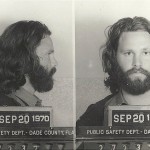An account provided by individuals of an event they have personally observed, is referred to as eyewitness testimony in legal terminology. They might be asked to explain a robbery trial or a traffic accident that they witnessed, for instance. This covers information on the crime scene, the identity of the offenders, etc. Research on eyewitness testimony is crucial for understanding human memory and cognitive psychology. Eyewitness testimony is typically given careful consideration by juries, who view it as a trustworthy source of information. However, studies in this field have shown that a variety of psychological factors can influence eyewitness testimony, none more so than Reconstructive Memory.
Knowledge of the validity of eyewitness testimony requires a knowledge of, Frederic Bartlett’s theory of reconstructive memory, which claimed that recall is open to individual interpretation based on taught or cultural norms and values, as well as how we view the world.
Individuals organize information according to what makes the most sense to them. We try to fit information into schemas, which are ways of organizing data, to make sense of it. Schemas are conceptual “units” of information that correlate to individuals, things, or circumstances that are encountered often. Prejudice and social values may have an influence on these schemas. Thus, schemas have the power to skew new or unintentionally “unacceptable” information to make it “fit in” with our preexisting knowledge or schemas. Consequently, this may lead to eyewitness testimony that is not trustworthy.
The legal community, law enforcement, and psychologists have collaborated to try and improve the accuracy and reliability of eyewitness testimony. Eyewitness memory significantly improved when researchers Geiselman, Fisher, MacKinnon, and Holland used an interviewing technique they called the Cognitive interview (CI). The strategy aims to inform witnesses of all the circumstances surrounding a crime without fabricating information or creating false memories. This method involves the interviewer getting to know the witness before posing any questions. The witness is then given the opportunity to provide an unrestricted account of what happened. The interviewer then probes further to get further details from the witness and reassures them that it’s okay to express uncertainty and move on. This method leads the witness, instead of following a strict expectation that the witness must recall every detail.
Correct implementation of the cognitive interview results in increased efficiency and accuracy of eyewitness testimony without the generation of extra false information.
References
Bartlett, F.C. (1932). Remembering: A Study in Experimental and Social Psychology. Cambridge: Cambridge University Press.
Geiselman, R.; Fisher, Ronald; MacKinnon, David; Holland, Heidi (1986). “Enhancement of eyewitness memory with the cognitive interview”. American Journal of Psychology. 99 (3): 385–401
Ghetti, S.; Goodman, G. S.; Schaaf, J. M.; Qin, J. (2004). “Issues In Eyewitness Testimony”. In O’Donohue, W. T.; Levensky, E. R. (eds.). Handbook of Forensic Psychology. San Diego, CA: Elsevier Academic Press. p. 532.
Wells, G. L.; Memon, A.; Penrod, S. D. (2006). “Eyewitness Evidence: Improving Its Probative Value”. Psychological Science in the Public Interest. 7 (2): 45–75.






 After about thirty minutes of this stressful ordeal and no luck, they drove me to the nearest station to file a report. There a detective gave me a photo album with plastic photo sleeves that held hundreds of mugshots of young African American men. At the time of the incident, I was not exactly in the frame of mind to notice physical characteristics of my assailants and I especially did not notice facial or other unique features as I had only seen them from behind. I never really saw their faces. I could only say they were youthful – probably young adults, their skin tone dark and that one was wearing red shorts. More over, after an hour had passed my memory for detail was fading. The detective, however, really wanted me to pick someone. I was asked, “Are you sure it wasn’t him?” and “What about this guy. He’s been known to do this sort of thing.” He suggested to me that all these suspects were guilty of something and that I shouldn’t worry too much about who I chose. It was all very unsettling. After about an hour of feeling extremely pressured and frustrated, I told the detective I just did not know if any of the pictures were my attackers. The detective gave up and had an officer drive me home.
After about thirty minutes of this stressful ordeal and no luck, they drove me to the nearest station to file a report. There a detective gave me a photo album with plastic photo sleeves that held hundreds of mugshots of young African American men. At the time of the incident, I was not exactly in the frame of mind to notice physical characteristics of my assailants and I especially did not notice facial or other unique features as I had only seen them from behind. I never really saw their faces. I could only say they were youthful – probably young adults, their skin tone dark and that one was wearing red shorts. More over, after an hour had passed my memory for detail was fading. The detective, however, really wanted me to pick someone. I was asked, “Are you sure it wasn’t him?” and “What about this guy. He’s been known to do this sort of thing.” He suggested to me that all these suspects were guilty of something and that I shouldn’t worry too much about who I chose. It was all very unsettling. After about an hour of feeling extremely pressured and frustrated, I told the detective I just did not know if any of the pictures were my attackers. The detective gave up and had an officer drive me home.